Publications & Data Briefs
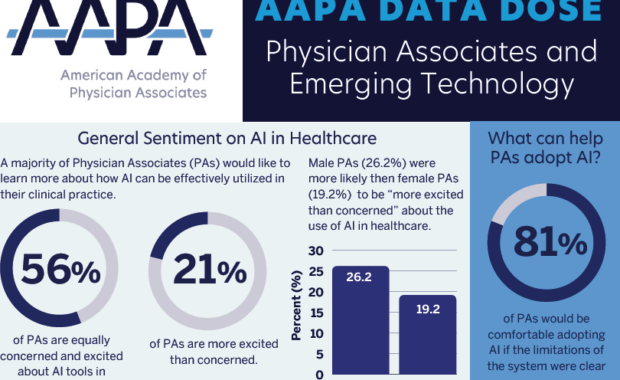
Data Dose: PAs and Emerging Technology
4 in 10 PAs indicated they were currently using AI in their clinical practice, work setting, or primary employer. The chart above displays the top 5 ways PAs were using these emerging technologies.
May 9, 2025
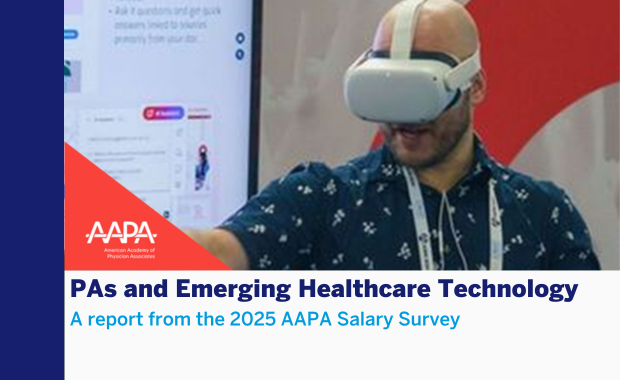
PAs and Emerging Healthcare Technology
In healthcare practices around the country, a wide variety of artificial intelligence (AI) tools are being implemented with the goal of improving patient outcomes, lowering costs, creating a more equitable system of care delivery, and reduce administrative burdens.1-2 While many physician associates (PAs) are interacting with AI systems, no formal studies to this point have explored how PAs feel about the addition of these software systems and their impact on clinical practice.
May 9, 2025

Type 1 Diabetes Diagnoses Are On the Rise: What Is the PA Role?
Type 1 diabetes diagnoses are on the rise, with over half now occurring in adults—and PAs play a crucial role in addressing this shifting landscape. Learn how PAs can break down barriers, improve outcomes, and empower patients in the fight against this chronic disease.
November 21, 2024
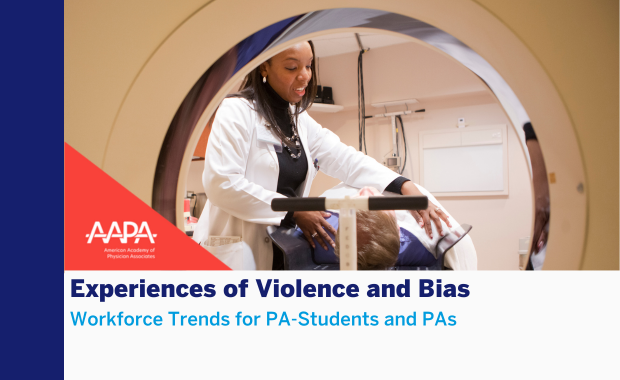
Experiences of Violence and Bias
Healthcare workers face higher rates of workplace violence than other professions in the United States. However, little is known about how often PAs, and PA-students participating in clinical rotations, experience violence or biased behavior in the workplace during patient interactions. In this data brief we report on findings from prior surveys on PA-students and PAs to illustrate the factors related to encountering violence and bias during clinical work.
November 19, 2024
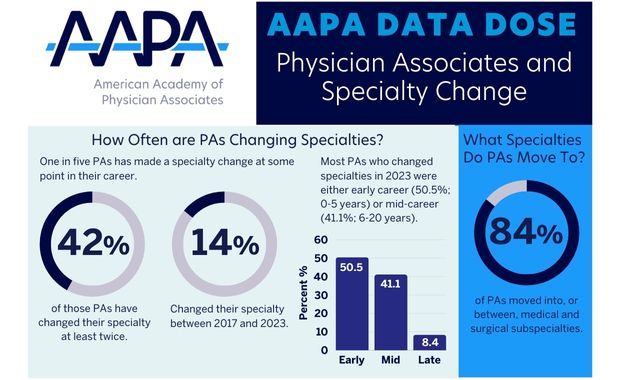
Data Dose: PAs and Specialty Change
One in five PAs has made a specialty change at some
point in their career. For more information, check out this brief infographic.
October 15, 2024
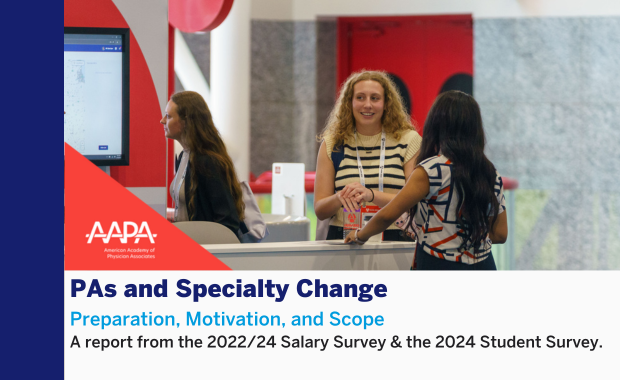
PAs and Specialty Change
PAs are afforded the flexibility to adapt to the changing health needs of their community through their generalist training and ability to move into new specialties more readily than other healthcare professionals. However, little is known about the motivations for, and scope of, specialty change. In this data brief we take a look at when PA students anticipate changing specialties, the proportion of PAs making specialty changes, and the drivers of these moves.
October 15, 2024

PAs in Leadership: How do they get there?
PA leaders are an important part of healthcare systems across the country. However, little is known about the pathways PAs follow towards their leadership roles. In this final brief in a three-part series on PAs in leadership, we examine these leadership pathways.
April 30, 2024
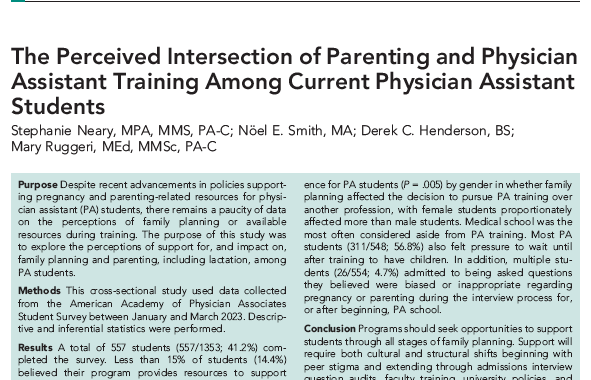
The Perceived Intersection of Parenting and Physician Assistant Training Among Current Physician Assistant Students
This study sought to explore the perceptions of support for, and impact on, family planning and parenting, including lactation, among PA students (PA-S). This study suggests few PA-S are aware of programs and resources available within their programs and felt pressure to wait until after training to have children.
November 28, 2023